Apple iPhone 8 Plus Review
You can now read:
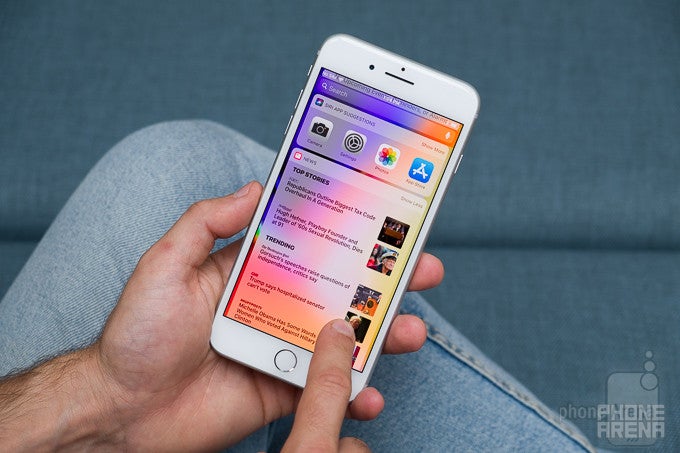
Introduction
Three years ago, Apple changed the face of its smartphone lineup not just with a new, larger size for the iPhone, but by introducing a second extra-large option for users who craved bigger screens still: the iPhone Plus. And for a while, that's basically what you were buying when you picked up an iPhone Plus: a regular iPhone but with a bigger screen.
But even from the start, there were hints that Apple wanted to differentiate its smartphone models based on more than just device size, and we were already seeing feature disparity between the two iPhones, as the Plus picked up optical stabilization for its camera. While seemingly minor, the idea of the Plus model as the home for advanced camera tech took root, and when the iPhone 7 Plus picked up dual rear cameras last year, it was clear that from here on out we'd be shopping for iPhones based not just on what size we preferred, but what we wanted to be able to do with the phone.
This year that decision is complicated further by the introduction of a third, wildly new iPhone model: the iPhone X. While it does represent another bigger-screen-yet option, it's far more than just that, experimenting with a controversial new design and advanced tech like Face ID.
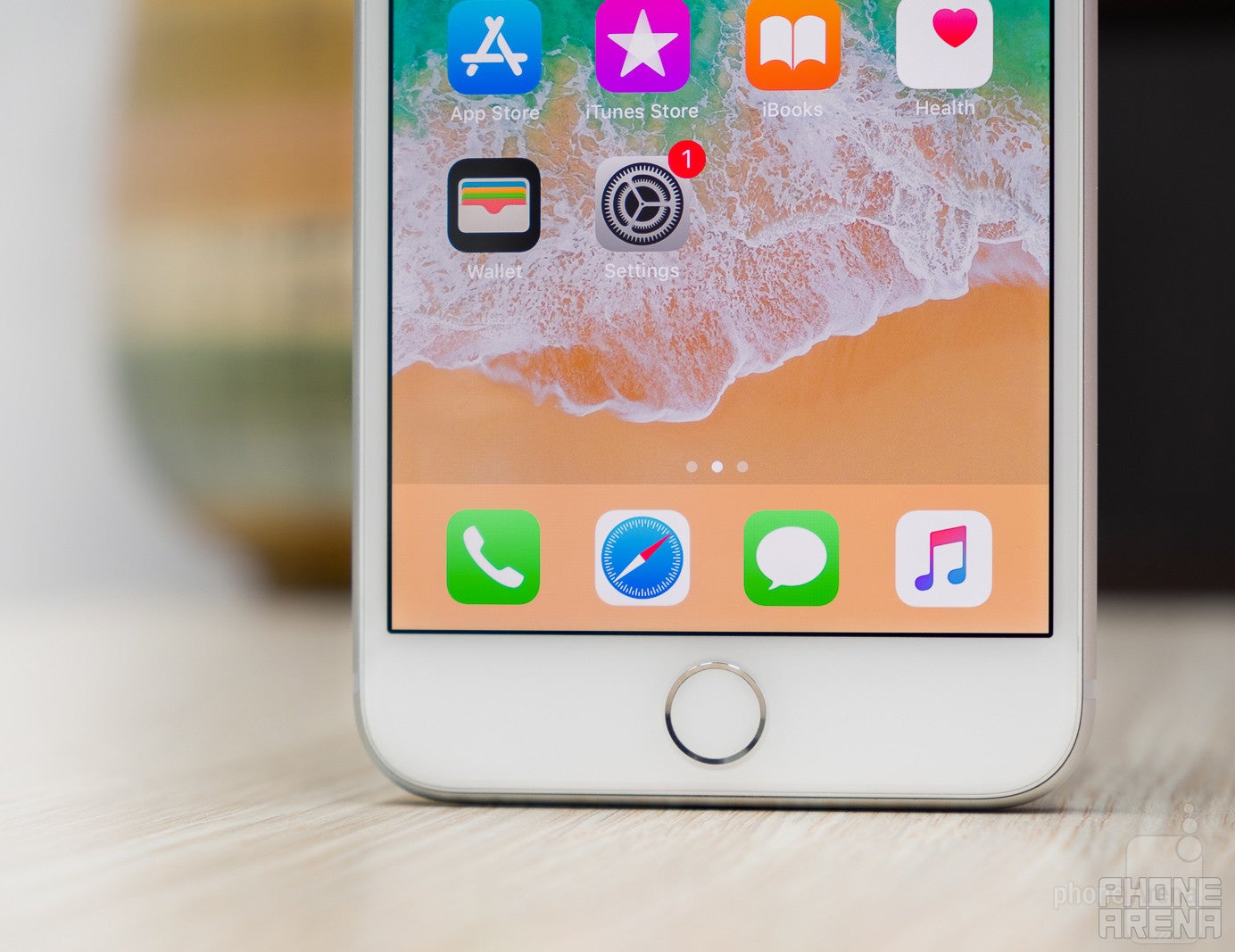
So who should be buying an iPhone Plus this year? Well, let's take a look at what you can expect from the phone's hardware, and Apple's latest software, as we start breaking things down and answering that question.
In the box:
- iPhone 8 Plus
- Lightning EarPods
- Analog headphone adapter
- Charger
- USB to Lightning cable
- SIM tool
- Welcome card
- Advisory card
- Stickers
Design
Heavier and ever so slightly larger than last year, the real big deal is the new glass back
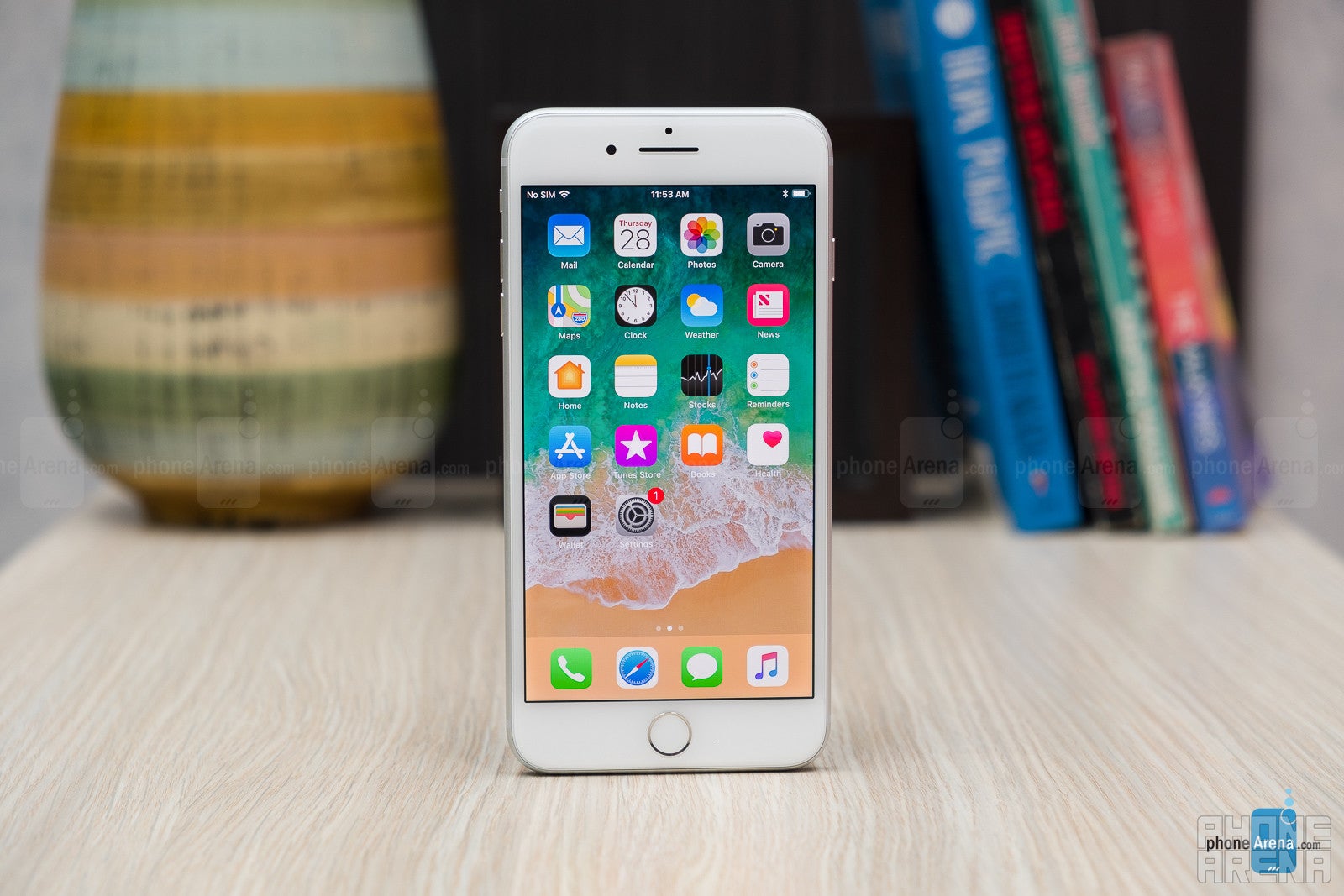
For a year where we're skipping the iPhone's “S” iteration and moving right to another full number, you might think that Apple's hardware was in for a major makeover. But as is maybe only befitting for a lineup that's as interesting and challenging as this year's, that's only partially true.
At least compared to the iPhone 7 Plus, the 8 Plus is not introducing a bold new design. In terms of looks and layout, this new iPhone Plus doesn't stray very far from the pattern established last year. What changes we see in shape in size are extremely minor, and the iPhone 8 Plus's external dimensions, though admittedly larger than last year, are only bigger to the tune of a few fractions of a single millimeter. Slightly more pronounced expansion occurs when we look at the weight of these phones, with the iPhone 8 Plus expanding from 188 to 202 grams. Still, even that growth isn't more than the mass of a few coins, and this year's iPhone Plus doesn't really feel larger or heavier in any way you're likely to subjectively notice.
But measurements only tell half the story, and with the iPhone 8 Plus we see Apple adopt a new glass back for its smartphones. While that may help empower the phone to take advantage of wireless charging, it could be a move that has a few shoppers thinking twice, as it also feels more damage-prone than the old design.
Apple's gone back and forth over just what degree of options it gives its users, and while some years can be very one-size-fits-all, others run the risk of overwhelming shoppers with choices. Perhaps the company was afraid it was leaning a little too far in the latter direction, after the iPhone 7 Plus was available in your choice of five colors. With the 8 Plus, Apple's reining things back in, and culling that selection down to just space gray (ie, black), silver, and gold. And considering the scratched-up mess many of those Jet Black iPhones turned into, perhaps we're better off without the option.
Waterproofing is back, just like we got on the iPhone 7 Plus, and we're glad to see that even with the new materials this time around, protecting the hardware against accidental water damage is still a priority.
While the size and shape of the 8 Plus aren't anything too far removed from what Apple's given us before, this handset falls victim to the same consequence of shifting design trends that stopped us from being as excited about phones like the HTC U11 as we might have been just one year in the past. With the arrival of extra-wide-aspect-ratio phones like the LG V30 or Samsung Galaxy Note 8, traditional phablets like the iPhone 8 Plus are starting to feel “fat,” or being too wide for the amount of screen real estate they offer.
Apple's admittedly doing something about that by moving to the new design of the iPhone X, but that doesn't do anything to help the 8 Plus. The smaller iPhone 8 is still petite enough to not conjure up the same emotions, but the Plus is ultimately left in an uncomfortable middle ground that's starting to feel less and less attractive.
Display
Sharp and colorful is great, but we miss the exceptionally high brightness of last year
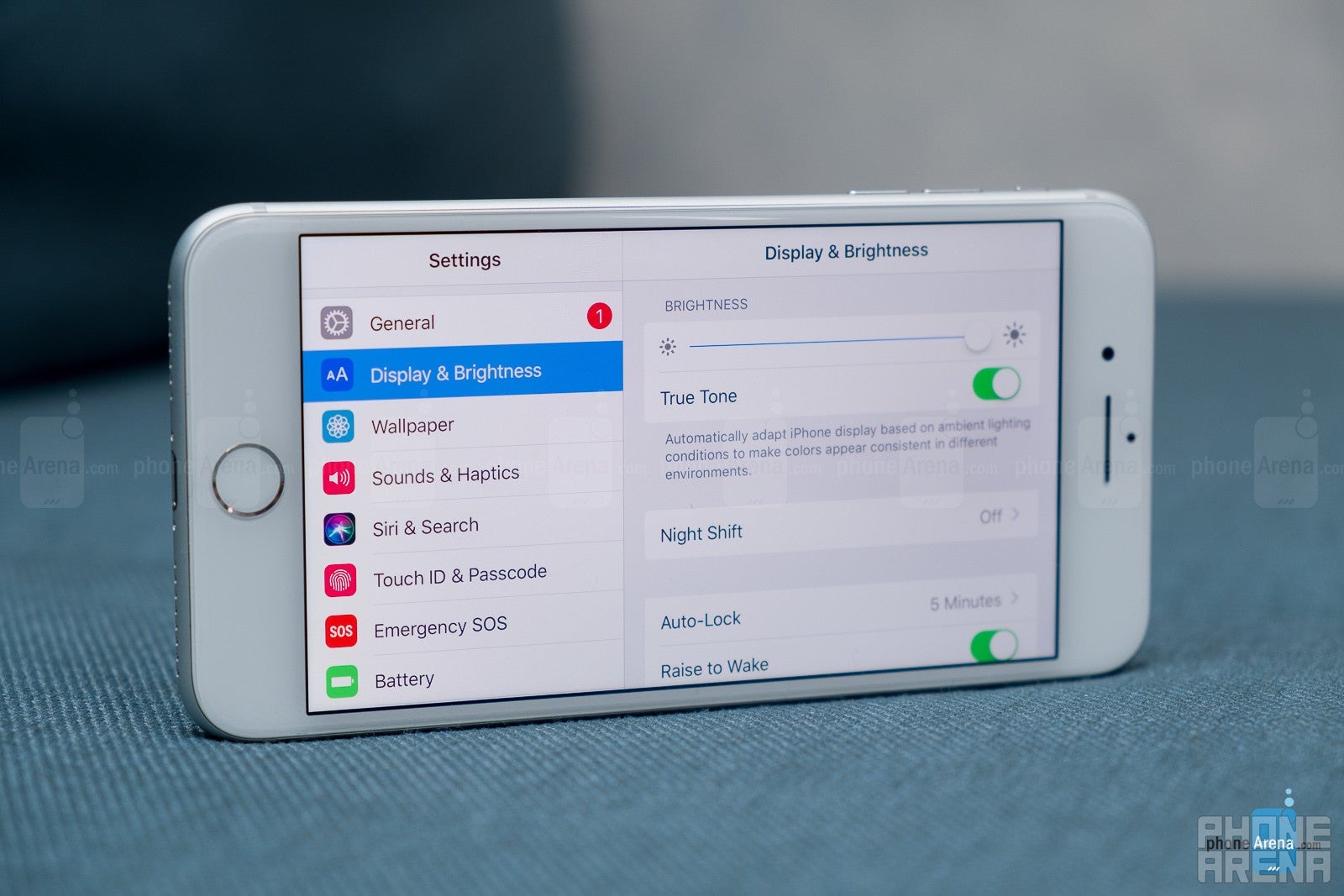
Apple's best, newest screen tech is reserved for the iPhone X, with its AMOLED panel and HDR-video support. But even as it keeps the same screen size, shape, and resolution as the iPhone 7 Plus, the 8 Plus still manages to squeeze in a little new hottness.
This year, that means True Tone – the same system we saw Apple deploy with the iPad Pro – coming to the iPhone. As Apple helpfully demos while you set up the iPhone 8 Plus, True Tone uses the phone's sensors to match screen color temperature with ambient lighting conditions. While that won't have any major impact on how you use your phone, it's exactly the kind of little “quality of life” improvement that Apple loves to highlight.
One important consideration to keep in mind if you're perusing the iPhone 8 Plus spec sheet is Apple's mention that the phone supports playback of HDR-enhanced video content. While that's true, of Apple's new iPhones only the iPhone X has a screen that's capable of actually reproducing that high-dynamic range video. So while HDR footage will play on the 8 Plus – and will look great, just like standard video on this big screen – it just can't offer quite the same experience as it would on the iPhone X.
Like we've come to expect from iPhone displays, the screen on the iPhone 8 Plus is bright and versatile, but this time around the Plus and regular iPhone aren't quite as evenly matched. Last year, the 7 models were both capable of some similarly bright output, but with this new generation of hardware, the screen on the 8 Plus isn't nearly as bright as its smaller sibling. The levels are still high enough as to be brighter than the majority of smartphones out there – so it's hard to be too, too upset – but it's still a confusing step back from the lofty heights we know Apple's capable of achieving.
Color reproduction is very good, and only the slightest hint of colors leaning towards the cyan side detracts from its accuracy.
Interface and Functionality
iOS 11 may not reinvent the wheel, but it's packed with enough enhancements to be a solid upgrade
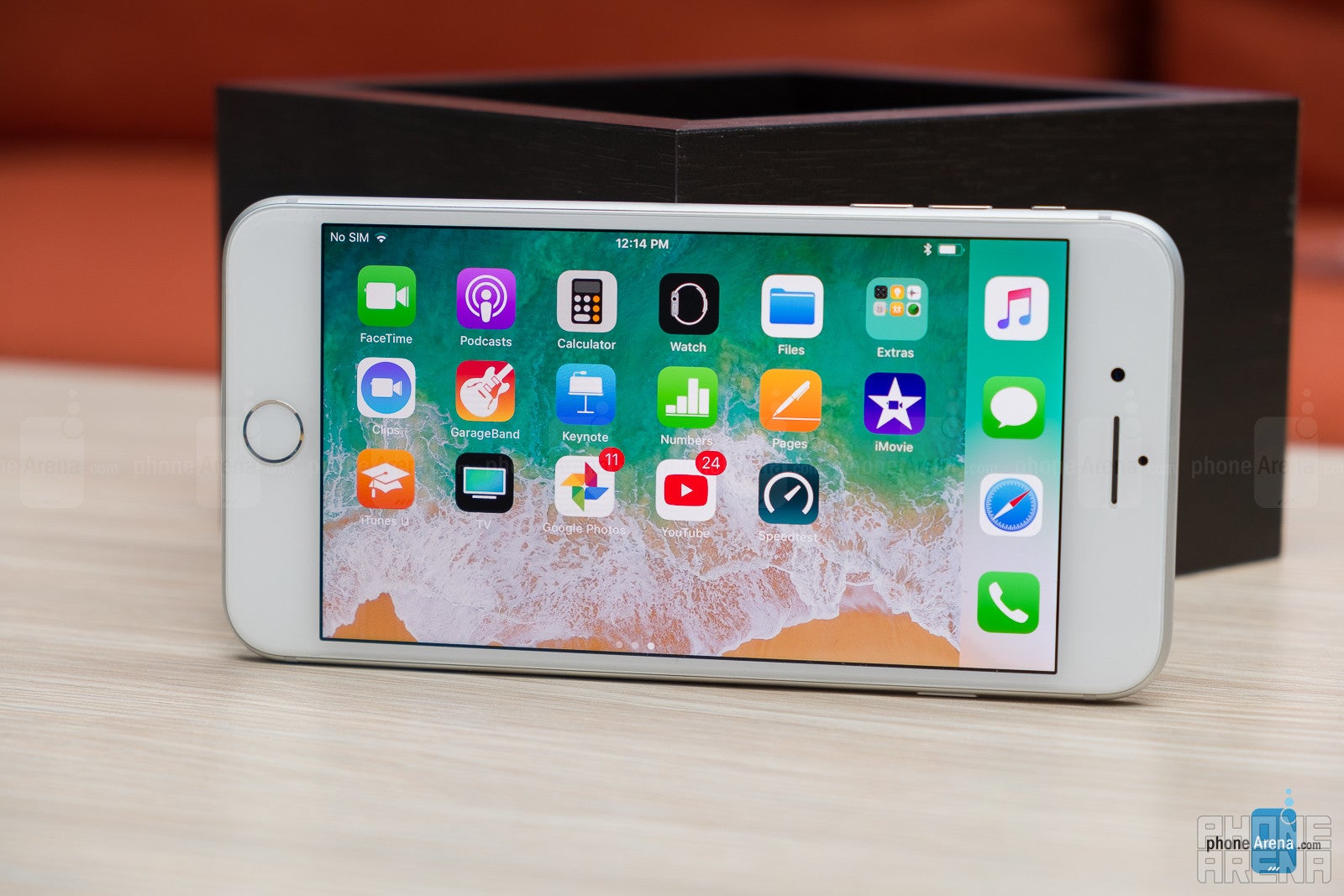
Just before the retail debut of the iPhone 8, Apple's iOS 11 updates started landing, and this new handset is understandably running 11 right out of the box. Compared to past iOS updates, we're not seeing a major overhaul, but instead a lot of little updates that still add up to a nice new edition.
One of the biggest winners is the new Control Center redesign, not only cramming in more functionality, but also giving users the ability to customize what toggles they see here. But for all the buttons that are there, it's a bit maddening which aren't. Take brightness controls, for example: there's a fantastic brightness slider (that's way more responsive than anything you'll find on Android), with toggles for Night Shift and True Tone. But utterly missing is any way to control the phone's auto-brightness setting.
Of course, this is just scratching the surface, and from extended Siri availability, to a new App Store, to Files and improved Maps, there's no shortage of enhancements worth paying attention to here.
Processor and Memory
Apple's new A11 chip isn't just the fastest for iOS devices – it's the fastest mobile CPU we've seen so far
No matter whether you're going with a big or little iPhone – or even holding off for the upcoming iPhone X – you know you're going to get Apple's latest and greatest silicon: the A11 Bionic chip. The processor's performance flies right past the entire pack of Snapdragon-based Android devices available now, to say nothing of last year's iPhone lineup. Really, the only serious competition it's got right now is the A10X at the heart of the latest iPad Pro models, and while those perform quite admirably, the iPhone 8 Plus still manages to eke by them in a few key tests.
Compared to the iPhone 8 with its slightly lower-res screen, the 8 Plus can't quite deliver the same insane frame rates from really demanding graphical apps, but you shouldn't dismiss this handset just because its sibling is slightly faster at specific tasks; we're talking about the difference between two super-fast race cars here, and while we're trying to give you the complete picture on each, these two are still very much in the same league.
While Apple continues to offer its users some well-done cloud storage options, local device capacity is still king, and in recent years we've seen manufacturers everywhere transitioning to higher and higher starting levels. Over on Android, 64GB is the new minimum on some of the highest profile flagships, and with the iPhone 8 Plus Apple gets on board the same boat.
Even if that's overkill for your needs, that lofty starting point is still quite empowering, freeing many users from ever worrying about storage space. And if you do need more, the 8 Plus is also available as a 256GB model – for a $150 premium.
Connectivity
Apple keeps up with the times with Bluetooth and satellite-tracking updates
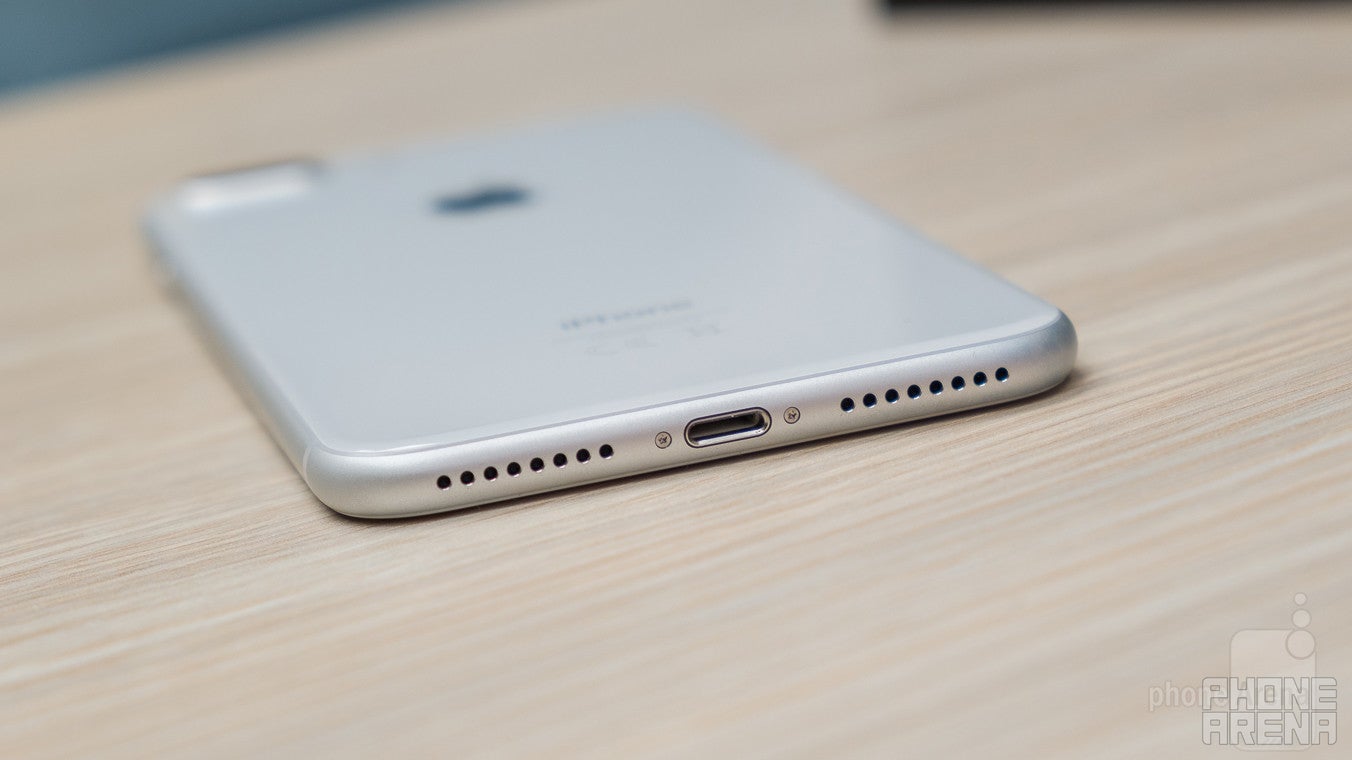
Apple's smartphones have long-ago matured to the point where they're not hurting for support for major connectivity standards, and even after holding back on tech like NFC, the hardware's finally caught up. As a result, there's not a lot of new places to go, but the iPhone 8 Plus still sees a few upgrades and arrival of support for new services.
Probably the most interesting improvement is the evolution from Bluetooth 4.2 to Bluetooth 5.0. While you're not likely to run into any situations where you absolutely need 5.0 support to work with new hardware, it does promise improvements that could extend speed and range limits, helping especially with internet-of-things hardware.
Another small enhancement comes in the form of support for additional satellite positioning tech, rendering the iPhone 8 Plus able to receive signals from both European Union and Japanese systems. And who doesn't like a faster, more accurate location lock?
Camera
Two great cameras get even better, but beta-quality software again rears its ugly head
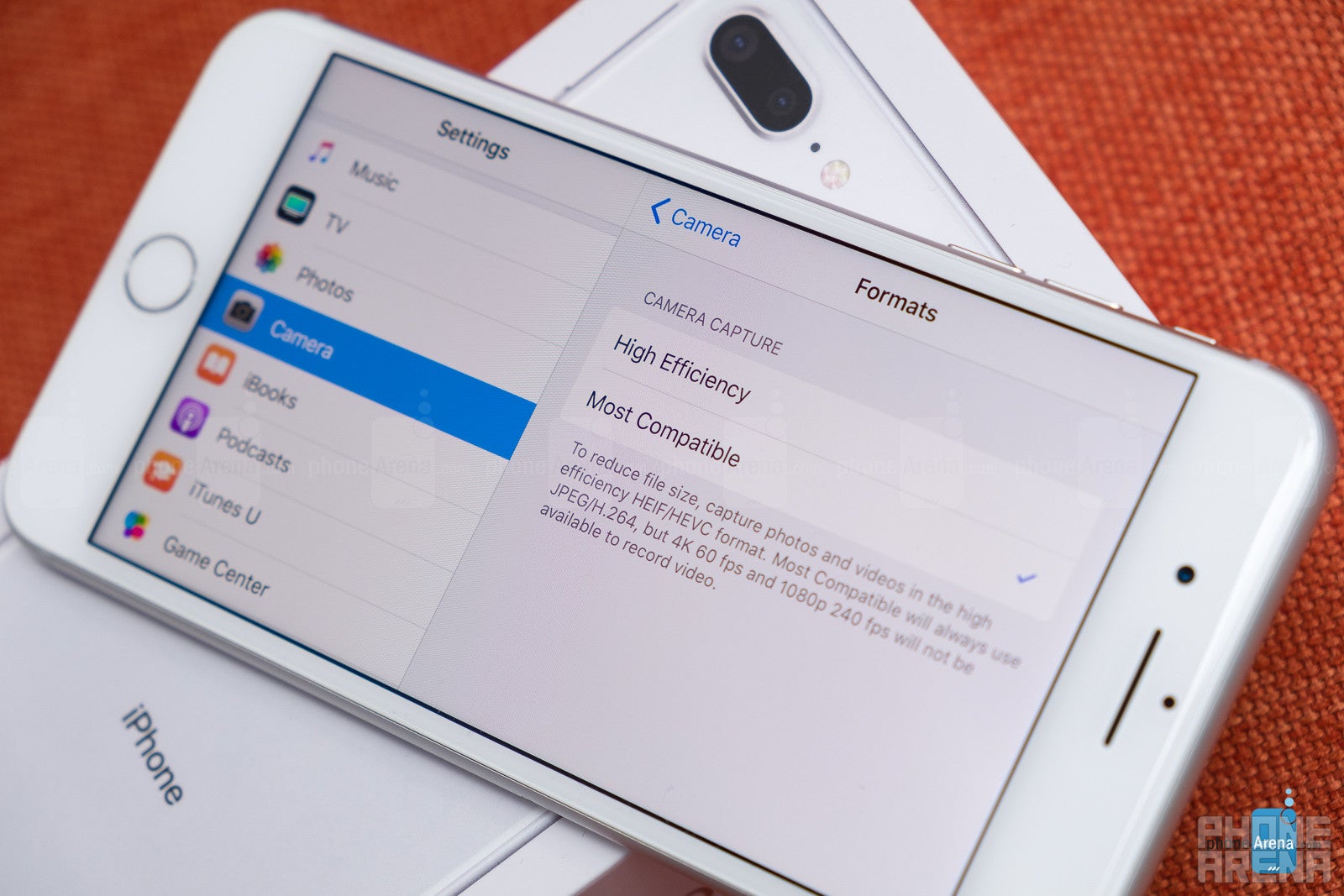
Last year, the iPhone 7 Plus represented one of the biggest steps forward for Apple's smartphone cameras yet, introducing a dual-camera system that not only offered users a telephoto zoom option, but also allowed for selective-focus special effects.
As should be little surprise, Apple's back with more of the same with the iPhone 8 Plus – and if you're only looking at raw specs, you might even think the company's just outright reusing the same camera that it launched last year.
But Apple's rarely a company to disappoint when it comes to the cameras on its phones, and while the iPhone 8 Plus isn't a revolutionary step forward in terms of imaging hardware, it does deliver some real improvements. Resolution for both rear cameras may stay at 12MP, but the sensors themselves are larger this year, resulting in bigger, more light-sensitive pixels. Those pixels also exhibit improved isolation from each other, for enhanced image fidelity, and new camera data-processing systems are intended to give boosts to things like HDR performance and auto-focus speed.
Beyond that, we also see video options extend to some new high-end frame-rate/resolution combos, and all this camera hardware scores optimizations for use with Apple's augmented-reality ARKit framework. Add a sprinkle of slow-sync for the camera's flash, and do we have a worthy upgrade to last year's impressive camera setup? Let's take a look.
Image quality
Based on how we've just described the iPhone 8 Plus camera hardware, it shouldn't be shocking to learn that the cameras on the 8 Plus take some seriously good-looking photos. Whether you're shooting in broad daylight or with twilight in full swing, the versatile camera makes taking great-looking shots as easy as tapping the shutter. Colors tend to look true to life, and focusing on a close-up macro subject is as easy as taking a landscape shot.
Swapping between the two cameras works just as well as it did the first time around, with nothing but a quick tap needed to jump between the normal and 2x telephoto lenses. Should you wish to press further in, a swipe of the finger is all it takes to explore even higher digital zoom modes, though with an unavoidable loss in fidelity.
No matter which camera you're using, everyday shots are captured easily, though for low-light operation you're going to want to lean more heavily on the wider-aperture standard camera, and leave the telephoto for when you've got light to spare.
This year, the famous portrait mode gets an upgrade, and just like when portrait first debuted on the 7 Plus, the new portrait lighting mode arrives as a beta. Now in addition to generating a blurred-background bokeh effect, you can also add artificial lighting to your subject, brightening things up, or even remove the background entirely. As is only befitting a beta, these effects can be a little hit and miss. Sometimes they look great, while other times only a few of the modes produce satisfactory result, while others miss the mark. There are still small issues with edge-detection, but the biggest glitches seem to be cases where the lighting effects fail to properly align with the intended subject. It's all a nice early effort, but we'd love to see it mature even further.
We also can't forget the 7MP front-facer, which is understandably not quite as versatile as the phone's main cameras, and its performance across shooting conditions reflects that. It's still quite decent, and works in a pinch, but the low-light performance especially can't hold a candle to the wide-angle rear camera.
Video recording
Like the iPhone 8, the dual cameras on the 8 Plus also put up an overall strong camera showing that continues into video performance, and this year that also means picking up some upgrades in the form of higher frame-rate/resolution options.
As we've come to expect, you can easily swap between wide-angle and telephoto cameras even while in the middle of filming video, just like when taking still pics. Just be aware that in the phone's very highest-end video mode, shooting in 4K at 60 FPS, the UI locks you into one camera – no switching in the middle of a shot. Still, the fact that it works everywhere else is fantastic, and shows that Apple clearly respects it dual-camera hardware as more than just a gimmick.
Video quality looks stellar, and the cameras easily handle varying lighting conditions. You won't have to worry about shifting subjects as the cameras seamlessly reacquire focus and adjust exposure as needs demand. And while audio quality during videos isn't out-of-the-park fantastic, it is more than serviceable, and you should have no problems hearing your subject or your own narration even while filming in noisy outdoor environments.
Multimedia
Great-sounding stereo speakers really deliver even if Apple's volume claims fall short
In order to be a multimedia powerhouse, you need more than just a big, beautiful screen like the iPhone 8 Plus has – you also need some really nice speakers to complete the experience. And while the speakers on the 7 Plus already sounded pretty good, especially with their stereo output, this year Apple says that things should be louder than ever – 25% louder.
Technically, Apple says listeners can enjoy output that's “up to” 25% louder, and while that may be the case under certain conditions, in our volume test we didn't measure a huge change since last year – we actually saw levels that were slightly lower, though the difference is small enough to be negligible. That said, just listening to the speakers on the iPhone 8 Plus should be enough to convince you they still sound really great, and even if you don't see the full scope of Apple's supposed improvements in every single circumstance, this is still one of the best phones around on which to listen to music.
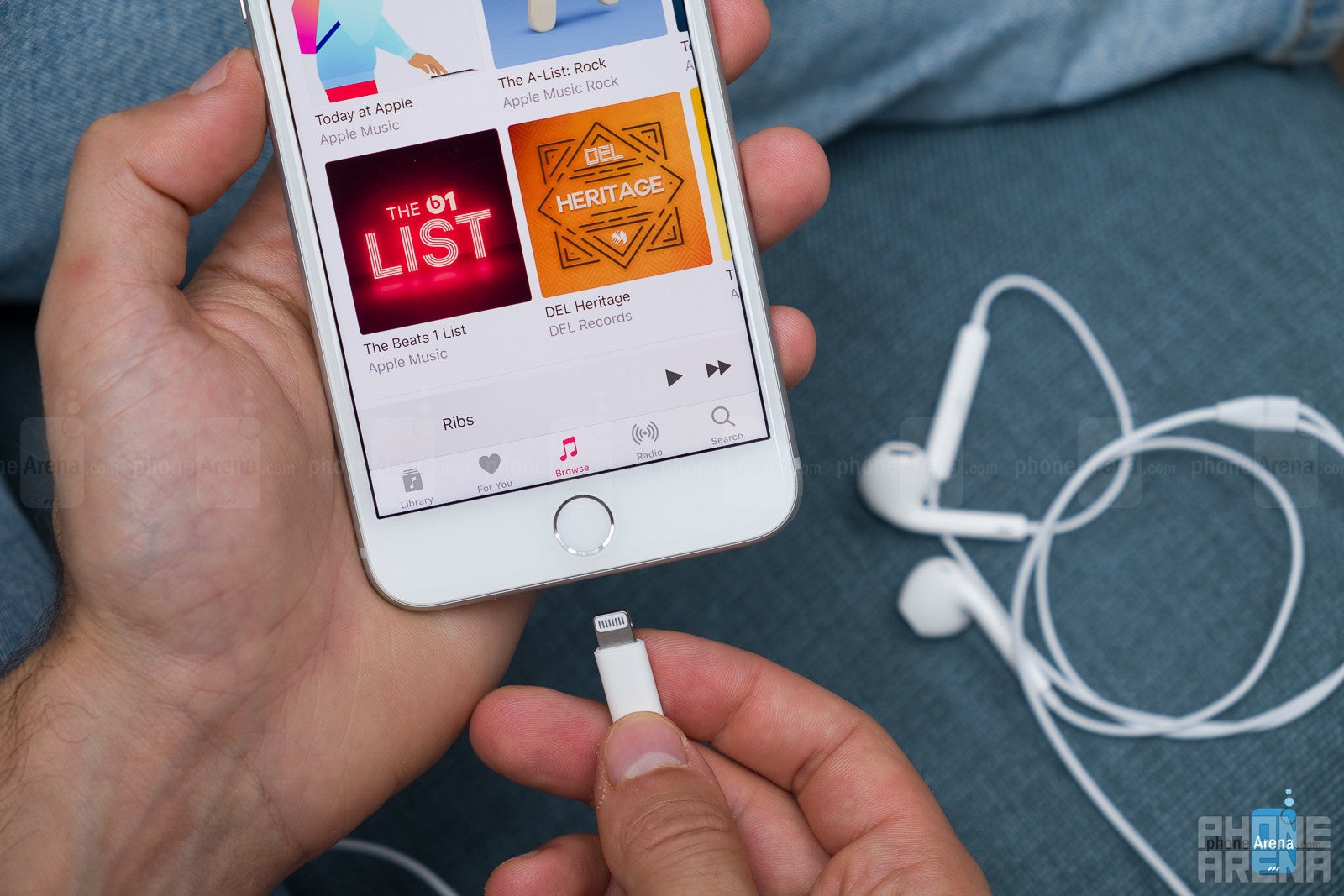
And to be fair, Apple does continue to ship its phones with an analog adapter you can pop in the Lightning port to continue using your old headphones, but carrying that around feels like you're dealing with a ticking clock, counting down until you lose the tiny dongle. We know – Apple's almost certainly never going to back down from its controversial stance – so just make sure you're aware of what you're getting into.
Call Quality
Confusing voice-call audio artifacts are hopefully a glitch Apple will correct soon

We first mentioned this issue in our iPhone 8 review, and at the time also noted that it similarly plagues the 8 Plus: While engaging with callers, we often observed a intermittent clicking sound coming from the phone's earpiece. This artifact doesn't seem to be emanating from the distant end of the call, which we verified by connecting to multiple numbers.
Curious if this might be a consequence of the phone's noise-canceling feature, we tried turning that off, yet the clicking continued. It's possible we just have a bad phone (or rather, bad pair of phones), but we're a little shocked to see an iPhone get something so simple so wrong. It's not like the clicking makes calls unintelligible – and some users will dismiss it as too minor to care about – but for a phone of this pedigree, and this price point, we expect voice-call perfection.
UPDATE (October 4, 2017): Apple has released the iOS 11.0.2 update that fixes the clicking sounds some users experienced during voice calls.
Battery Life
Beyond giving us some of the best iPhone battery life yet, the 8 Plus doesn't skimp on new power features
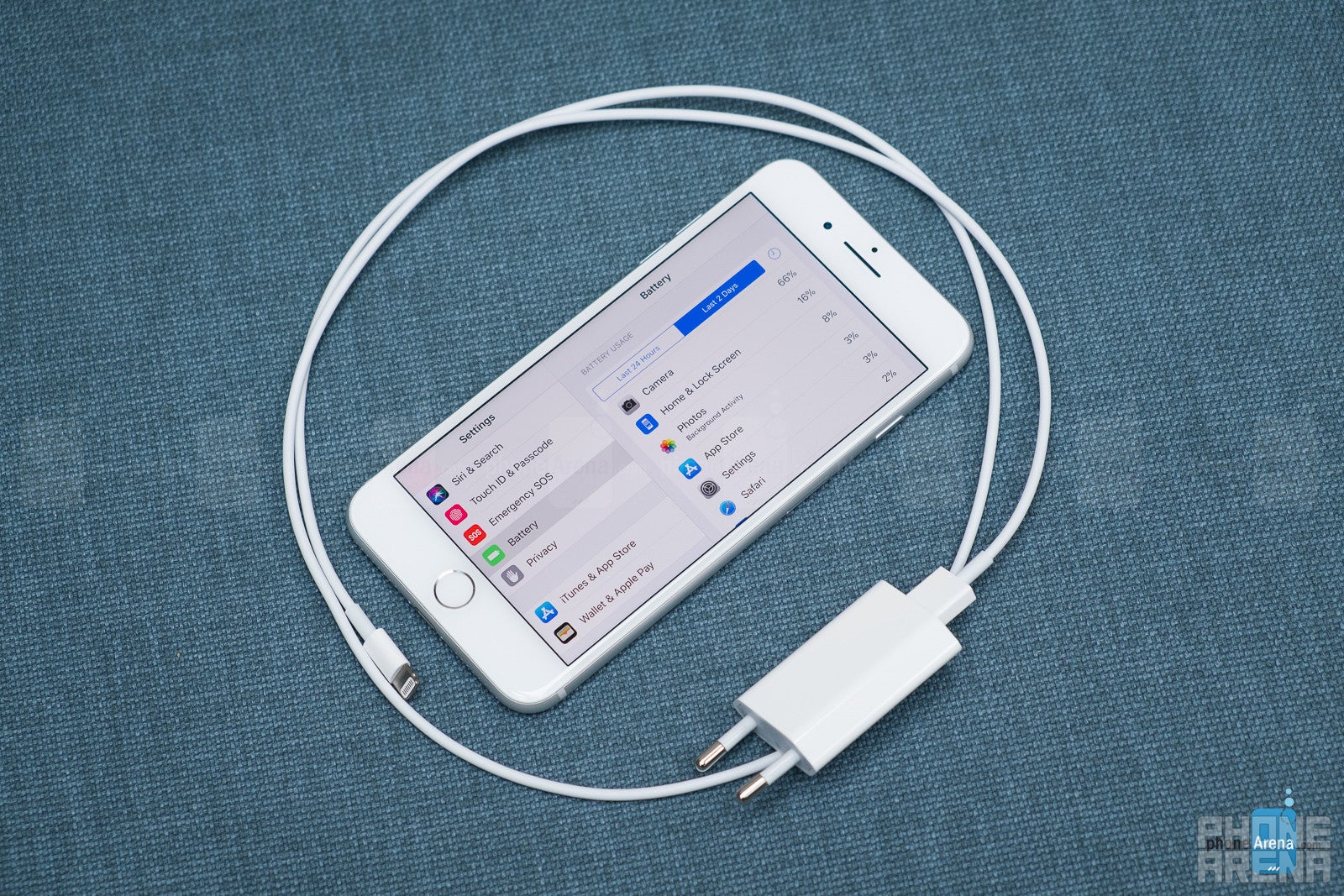
The iPhone Plus may have a bigger battery than the standard iPhone, but it also has a much larger screen. For other manufacturers, those two considerations might just cancel each other out, and we'd find the two phones exhibiting similar battery life. But just like we saw with iPhone and iPhone Plus models going back a few years now, the larger iPhone's increased power capacity manages to outpace any increased consumption.
With this new handset being roughly the same shape and size as last year's model, we weren't expecting any huge changes when it comes to battery capacity – and indeed, Apple tells shoppers that the iPhone 8 Plus should give them similar battery life as compared to the iPhone 7 Plus.
But as our tests show, not only does this year's phone enjoy better battery life than last year, stretching up to about ten-and-a-half hours of screen-on time, the gap between the two iPhones is growing larger still, helping to further establish the 8 Plus as the model to go for if endurance is a big selling point for you. Just be aware that recharging this big battery takes time, too, and it will be almost three hours while the phone goes from zero to full.
That's all well and good, but the even-more interesting stuff starts happening when we pair the phone with some optional accessories.
For the first time this year, the iPhone supports fast charging, albeit not with the power adapter included with the handset. Instead, if you pair the phone with a high-output USB Type-C power adapter, as you might have from your Apple laptop, and connect it to the iPhone 8 Plus over a Lightning cable, you can recharge your phone at an accelerated rate. We haven't put this combination to the test yet ourselves, but it's definitely something we'll be looking into.
The other big news is the arrival of wireless charging, with support for systems based on the Qi standard. Luckily, that's pretty ubiquitous in wireless charging circles, and while you can pick up a new charging pad just for your iPhone 8 Plus, there's a good chance that the phone will work just fine with existing hardware you may have lying around.
We tried this capability out with a Samsung wireless charger, and the iPhone 8 Plus performed nearly flawlessly. Of special note was just how quickly the phone was able to recognize the charger and begin refueling; sometimes Android phones can take a beat after being set down on a pad before they signal that recharging has begun, while the 8 Plus seemed to instantly get things started. And if you were concerned, we also tried using wireless charging with a case on the phone, and didn't run into any major problems – positioning can be a little wonky depending on your pad, but it ultimately works.
All this considered, from a power standpoint the iPhone 8 Plus is a fantastically strong contender, covering the bases of both all-day battery life and surprisingly flexible recharge options.
Conclusion
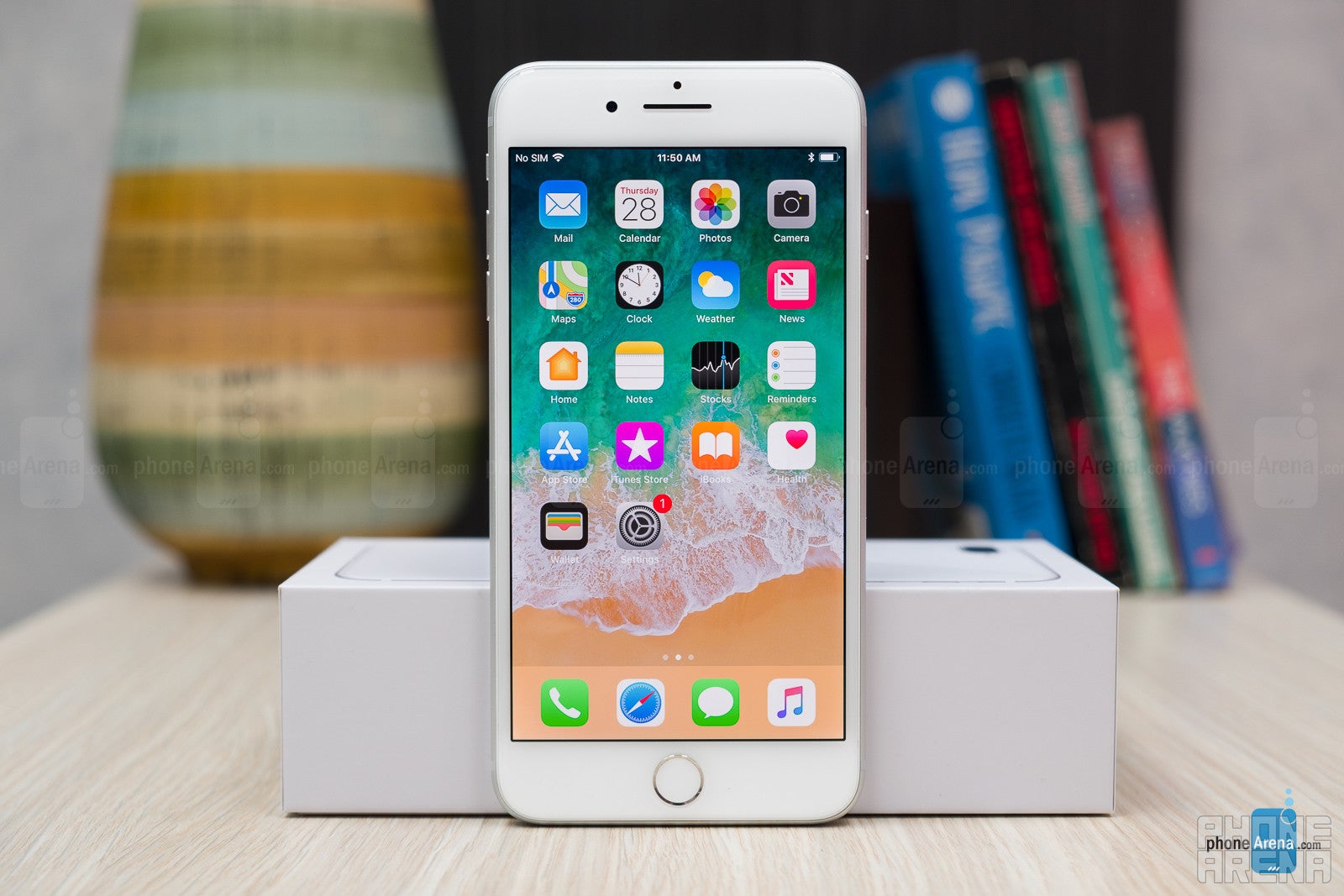
It's impossible to deny that the iPhone 8 Plus has a lot going for it: it takes everything we liked about the iPhone 7 Plus, delivers a few worthwhile upgrades, and largely steers clear of trying to fix things that aren't broken. While it feels like a much lesser step forward than the 7 Plus itself was, some of the new features here could really end up being surprise hits, and we've especially got our eye on how wireless charging is received.
The new glass back is attractive enough, but we're still not sold on the level of durability it offers, and just like with the iPhone 8, we're confused and concerned about the odd clicking noise besieging our voice calls. Still, neither of those issues are serious enough to really have us looking at the iPhone 8 Plus in a strongly negative light.
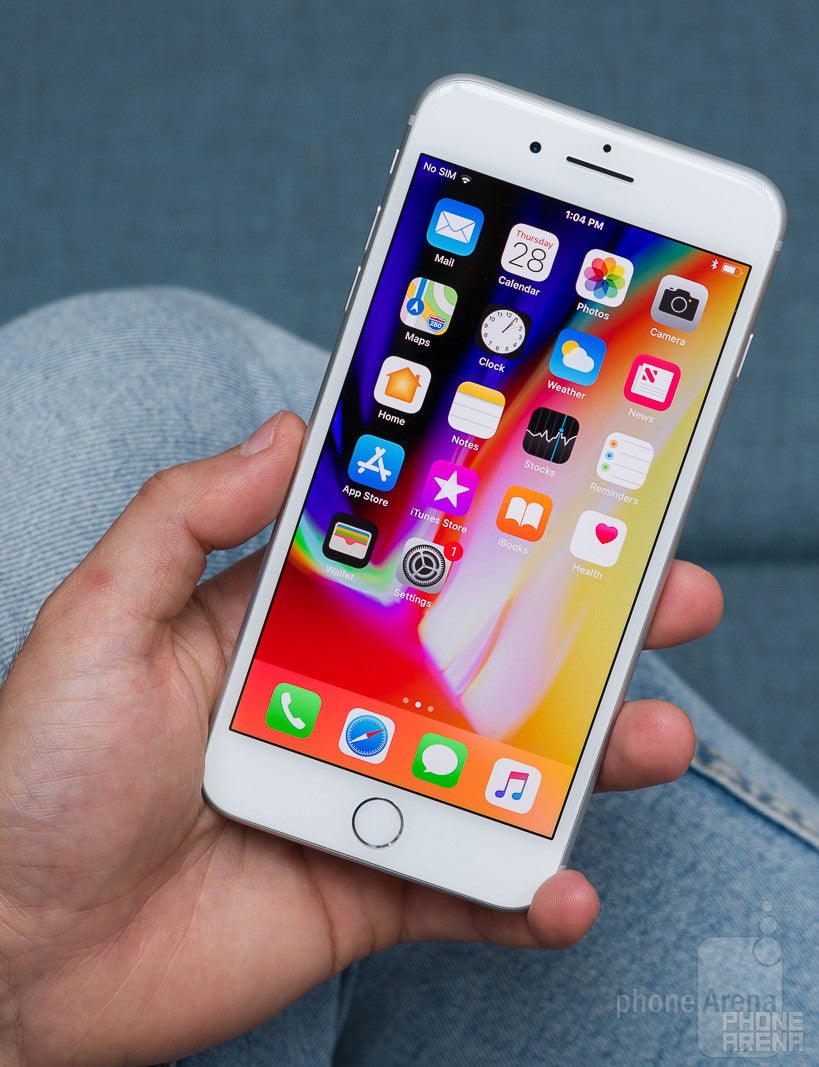
So where does that leave Apple's more traditional phablet?
Well, it's a much more affordable option, and even as a pricier iPhone than the 8, the Plus is still $200 less than the X. It's also a phone that's going to feel much more familiar than this odd new design, and while some smartphone users will seek out the innovative and unknown at every step, there's nothing wrong with taking comfort in a handset that gives you more of what you already know – and that it's faster, with better battery life than before, is a very nice cherry on top.
While we're forced to admit that this year's iPhone Plus is no longer the jewel in Apple's smartphone crown, it's no less a powerful, versatile phone than it's been in past generations, and a lot of the users who liked those predecessors are going to find plenty to enjoy here. But we're not going to fault you at all – and we doubt Apple would, either – if the iPhone 8 Plus just doesn't feel as appealing as it might have had the iPhone X never come to pass.
Bottom line: if you prefer your iPhone with this more traditional screen shape, or just can't stomach the idea of a $1000 smartphone, go ahead and dive right into the iPhone 8 Plus. But if you can wait just a little longer so you can get a chance to see what the iPhone X can really do, you'll be prepared to make one very informed decision about which vision for the future of Apple smartphones you want to support.

Follow us on Google News

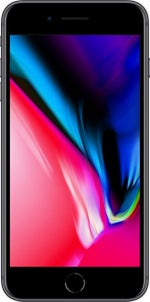
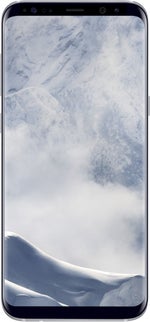
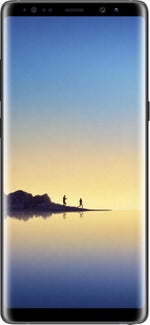




















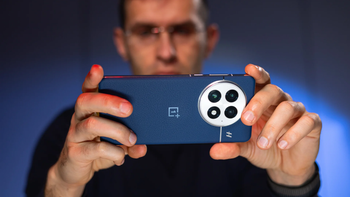

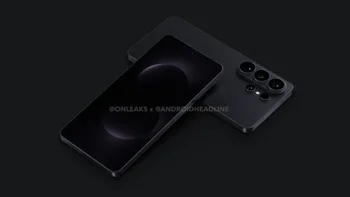






Things that are NOT allowed:
To help keep our community safe and free from spam, we apply temporary limits to newly created accounts: